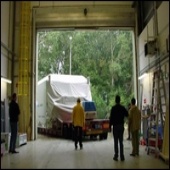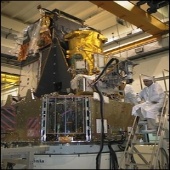ESA Science & Technology - News Archive
News archive
News archive
Published: 23 August 2001
Published: 10 August 2001
Published: 10 August 2001
Published: 9 August 2001
Published: 31 July 2001
Published: 30 July 2001
Published: 30 July 2001
Published: 24 July 2001
Published: 23 July 2001
Published: 20 July 2001
Published: 17 July 2001
Published: 16 July 2001
Published: 13 July 2001
Published: 12 July 2001
Published: 11 July 2001
Published: 11 July 2001
Published: 10 July 2001
The Double Cluster NGC 1850 found in one of our neighbouring galaxies, the Large Magellanic Cloud, is an eye-catching object. It is a young globular-like star cluster - a type of object unknown in our own Milky Way galaxy. Moreover, NGC 1850 is surrounded by a pattern of filamentary nebulosity thought to have been created during supernova blasts.
Published: 10 July 2001
Published: 9 July 2001
Published: 9 July 2001
—
20 Items per Page


















